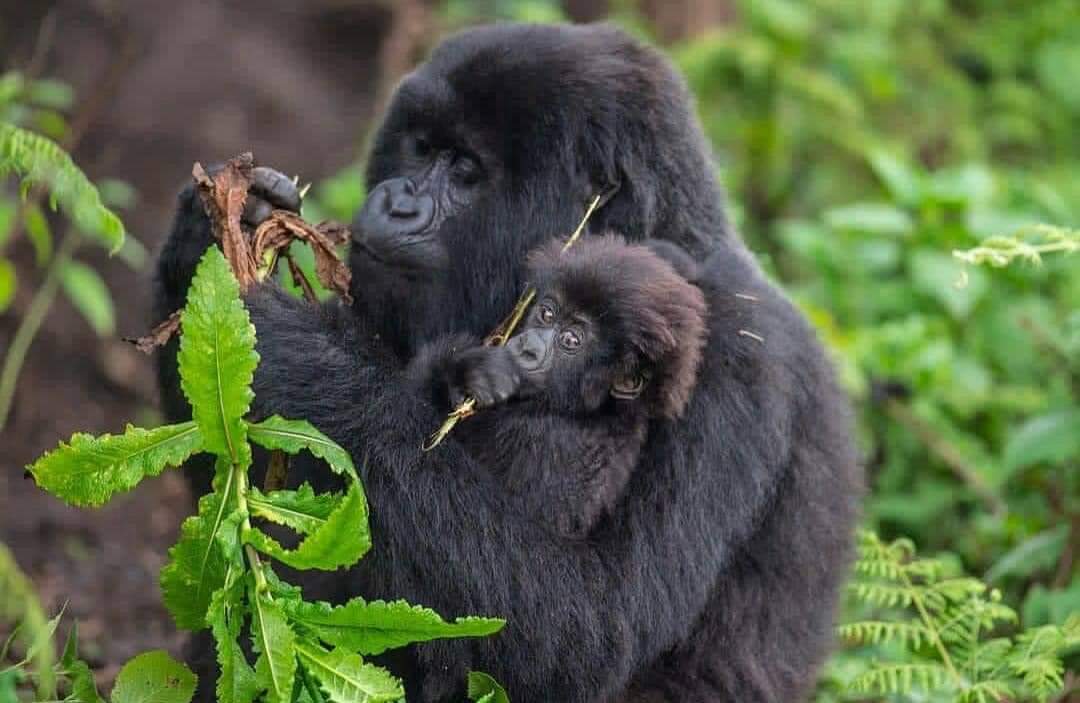Why Mountain Gorillas and Chimpanzees Don’t Coexist, Gorillas and chimpanzees are two of the closest living relatives to humans, sharing a common ancestor that lived millions of years ago. They belong to the same biological family, Hominidae, and the same order, Primates, but they are different species with distinct behaviors, social structures, and physical characteristics. Here’s a closer look at each of these fascinating primates:
Gorillas (Gorilla spp.):
- Physical Characteristics: Gorillas are large, powerfully built primates, with males typically being much larger than females. They have broad chests, a wide face, and small eyes, as well as longer arms than legs, which makes them adapted for their arboreal lifestyle. Their dark fur can vary in color and texture between species, with a silvery back distinguishing the mountain gorilla subspecies.
- Social Structure: Gorillas typically live in groups led by a dominant male called a “silverback.” These groups consist of multiple females and their offspring. The silverback is responsible for leading the group, making decisions, and defending the group against predators and rival males. Gorilla groups can vary in size from a few individuals to over 20 members.
- Diet: Gorillas are primarily herbivorous, with a diet that mainly consists of leaves, stems, roots, and fruits. They have a specialized digestive system that enables them to extract nutrients from the fibrous plants they consume.
- Behavior: Gorillas are known for their relatively peaceful behavior and are not territorial. They typically avoid conflict, and confrontations between groups are generally rare and usually non-violent. Gorillas communicate through a range of vocalizations, facial expressions, and body postures, which help them to maintain social cohesion within their groups.
Chimpanzees (Pan troglodytes):
- Physical Characteristics: Chimpanzees are smaller than gorillas, with males weighing around 100-130 pounds (45-60 kilograms) and females around 70-100 pounds (32-45 kilograms). They have long arms and short legs, and their hands and feet are adapted for both climbing and walking. They have dark hair and skin, with a slightly stooped posture.
- Social Structure: Chimpanzees live in communities led by an alpha male, with multiple females and their offspring. These communities can consist of several hundred individuals, who may break into smaller groups for foraging or other activities.
- Diet: Chimpanzees are omnivores and have a more varied diet than gorillas. They consume fruits, leaves, seeds, bark, insects, and even small mammals. They are known to hunt and scavenge for food, using tools like sticks or rocks to crack open nuts or catch insects.
- Behavior: Chimpanzees are highly intelligent and exhibit complex social behaviors. They are known for their problem-solving abilities, tool use, and communication skills. They have a variety of vocalizations, gestures, and facial expressions that they use to communicate with each other.
Both gorillas and chimpanzees are facing threats to their survival, including habitat loss, poaching, and disease. Conservation efforts are ongoing to protect these incredible primates and their habitats, but their future remains uncertain.

